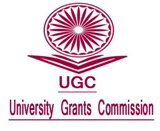Impact of Extension Services Provided by ATMA (Agricultural Technology Management Agency) on Small and Marginal Farmers in Rural Assam
DOI:
https://doi.org/10.26725/JEE.2021.3.33.6659-6670Keywords:
ATMA; Agricultural Extension Services; Propensity Score Matching; Small and marginal farmers; AssamAbstract
Agricultural Extension Services aim at disseminating new knowledge and skill to farmers to aid them in adopting new agricultural technologies and use their resources efficiently. Agricultural knowledge improves their skill and decision-making and enhances more efficient utilization of agricultural technologies. With a sample of 160 famers collected from Golaghat district of Assam by using multi-staged random sampling method, this study attempts to understand the impact of extension services provided by ATMA (Agricultural Technology Management Agency) in rural Assam. The Propensity Score Matching (PSM) technique is employed to control for potential sample selection biases. The analysis and findings reveal that the extension services provided by ATMA in the study area positively impacts on the income and paddy production of the small and marginal farmers. Timely dissemination of extension services which meet the actual needs of the farmers can impact the farmers income and output production to larger extent.References
Ainembabazi, J. H., & Mugisha, J. (2014). The Role of Farming Experience on the Adoption of Agricultural Technologies: Evidence from Smallholder Farmers in Uganda. Journal of Development Studies, 50 (5), 666-679.
Ali, A., &Rahut, D. B. (2013). Impact of Agricultural Extension Services on Technology Adoption and Crops Yield: Empirical Evidence from Pakistan. Asian Journal of Agriculture and Rural Development, 11 (3), 801-812.
Anderson, R.J., & Feder, G. (2004). Agricultural Extension: Good Intenstion and Hard Realities. The World Bank Research Observer, 19 (1),41-60.
Babu, S.C., Joshi, P.K., Glendenning, C.J., A s e n s o - O k y e r e , K w a d w o , &Sulaiman V., R. (2013). The State of Agricultural Extension Reform in India: Strategic Priorities and Policy Options. Agriculture Economics Research Review, 26 (2), 159-172.
Biam, K. P., & Barman, U. ( 2017 ) . E ff e c ti v e n e s s o f R e s e a r c h -Extension- Farmer l inkages of A g r i c u l t u r a l T e c h n o l o g y Management Agencies in Assam, India. International Journal of Current Microbiology and Applied Sciences, 6(12), 1873–1883.
Birner, R., Davis, K., Pender, J., Nkonya, E., Anandajayasekeram, P., Ekboir, J., Mbabu, A., Spielman, D.J., Horna, D., Benin, S., & Cohen, M. (2009). From best practice to best fit: A framework fo r d e s i g n i n g a n d a n a l y z i n g pluralistic agricultural advisory services worldwide. Journal of agricultural education and extension, 15(4), 341-355.
B o r t a m u l y, D. , & Da s , P. ( 2 0 1 8 ) . Performance of different role items as perceived by the agricultural e x t e n s i o n p e r s o n n e l i n t h e revitalized extension system in Assam. Agriculture Update, 13(2), 211–216.
Cawley, A., O'Donoghue, C., Heanue, K., Hilliard, R., & Sheehan, M. (2018). The impact of extension services on farm-level income: An instrumental variable approach to combat endogeneity concerns. Applied Economic Perspectives and Policy, 40(4), 585-612.
Davis, K., Nkonya, E., Kato, E., Mekonnen,D. A., Odendo, M., Miiro, R., &Nkuba,J. (2012). Impact of farmer field schools on agricultural productivity and poverty in East Africa. World development, 40(2), 402-413.
Deka, C., Mishra, P., & Baruah, R. (2017). Organizational Level Performance of A g r i c u lt u r a l Te c h n o l o g y Management Agency (ATMA) under New Extension Reforms in the State of Assam. Asian Journal of Agricultural Extension, Economics & Sociology, 19(2), 1–7.
Dercon, S., Gilligan, D. O., Hoddinott, J., &Woldehanna, T. (2009). The impact of agricultural extension and roads on poverty and consumption growth in fifteen Ethiopian v i l l ages. American Journal of Agricultural Economics, 91(4), 1007-1021.
Duflo, E., & Kremer, M. (2003, July). Use of randomization in the evaluation of development effectiveness. In World B a n k O p e r a ti o n s E v a l u a ti o n Department (OED) Conference on Eva l u a ti o n a n d Deve l o p m e n t Effectiveness (Vol. 15).
Godtland, E. M., Sadoulet, E., Janvry, A. d.,Murgai, R., & Ortiz, O. (2004). The Impact of Farmer Field Schools on Knowledge and Productivity: A Study of Potato Farmers in the P e r u v i a n A n d e s . E c o n o m i c Development and Cultural Change, 53,63-92.
Goswami, B., &Bezbaruah, R. J. (2017). Comparing public and private agricultural extension services- insights from the Brahmaputra Valley of Assam. Economic and Political Weekly, 52(52).
Hasan, M. F., IMAI, K. S., & SATO, T. (2013).Impact o Agricultural Extension on Crop Productivity, Poverty and Vulnerability: Evidence from Uganda.
Heinrich, C., Maffioli, A., & Vazquez, G. ( 2010). A primer for applying propensity-score matching. Inter- American Development Bank.
Hunt, W., Birch, C., Vanclay, F., & Coutts, J. (2014). Recommendations arising from an analysis of changes to the Australian agricultural research, development and extension system. Food Policy, 44, 129-141.
Indian Institute of Management, Lucknow. (2004a). Successful Case Studies, Interventions and Innovations in Te c h n o l o g y D i s s e m i n a ti o n , Agriculture Management Centre.
Indian Institute of Management, Lucknow.( 2004b). Impact Assessment Report, on the Innovations in Technology Dissemination (ITD) Component of the National Agricultural Technology Project, Agriculture Management Centre.
Josephat, P., &Likangaga, R. (2015). Analysis of Effects of Agriculture Intervention Using Propensity Score Matching. Journal of Agricultural Studies, 3(2), 49.
Läpple, D., & Hennessy, T. (2015). Assessing the impact of financial incentives in extension programmes: evidence from Ireland. Journal of Agricultural Economics, 66(3), 781-795.
Me n d o l a , M . ( 2 0 0 7 ) . A g r i c u l t u ra l Technology Adoption and Poverty Reduction: A Propensity-Score Matc h i n g A n a l ys i s fo r Ru ra l Bangladesh. Food Policy, 32 (3),372–393.
R a g a s a , C . , U l i m w e n g u , J . , Randriamamonjy, J., &Badibanga, T. ( 2 0 1 6 ). F a c t o r s a ff e c ti n g p e r fo r m a n ce of a g r i c u l t u r a l e x t e n s io n : E v i d e n c e f r o m Democratic Republic of Congo. The Journal of Agricultural Education and Extension, 22(2), 113-143.
Reddy, M., & Swanson, B.E. (2006). Starategy for Upscaling the ATMA Model in India. Proceedings of the 22 nd Annual Meetings of the Association fo r I nternational Agricultural and Extension Education , Clearwater Beach, FL, 14–17 May,2006.
Rosenbaum, P., & Rubin, D. (1983). A s s e s s i n g s e n s i ti v i t y t o a n unobserved binary covariate in an observational study with binary outcome. Journal of the Royal Statistical Society, Series B, 45, 212-218.
Saikia, P., Das, M. D., & Deka, M. B. (2018). Impact of agricultural extension services on empowerment of farm women of Assam. Asian Journal of Home Science, 13(1), 37–46.
Shita, A., Kumar, N., & Singha, S. (2020). Productivity and welfare effects of agricultural technologies: A study of maize producing households in Ethiopia using PSM approach. Indian Journal of Engineering & Materials Sciences, 27, 921-926.
Singh, K. M., Meena, M. S., Swanson, B. E.,Reddy, M. N., &Bahal, R. (2014). In- Depth Study of the Pluralistic Agricultural Extension System in India.
Suvedi, M., Ghimire, R., & Michael, K. (2017). Farmers' participation in extension programs and technology adoption in rural Nepal: a logistic regression analysis. The Journal of Agricultural Education and Extension, 23 (4), 351-371.
Swanson, B., Singh, K. M., & Reddy, M. N. ( 2 0 0 8 ) . A d e c e n t r a l i z e d , p a r tic i p ato r y, m a r ket - d r i ve n extension system: The ATMA model in India. Participatory,Market-Driven Extension System: The ATMA Model in India (October 10, 2008).
Teka, A. M., & Lee, S.-K. (2019). The impact of agricultural package programs on farm productivity in Tigray-Ethiopia: Panel data estimation. Cogent Economics & Finance, 7:1631987.
Walling, I., Amod, S., Yadav, M. K., Rajbhar,A. K., &Kankabati, K. (2017). Impact o f a g r i c u ltu r a l t e c h n o l o g y management agency on rural economy of Nagaland, India. Plant Archives, 17(2), 1511-1516.
Downloads
Published
How to Cite
Issue
Section
License
Copyright (c) 2021 https://creativecommons.org/licenses/by-nc-sa/4.0/

This work is licensed under a Creative Commons Attribution-NonCommercial-ShareAlike 4.0 International License.
Authors who publish with JEE agree to the following terms:
- Authors retain copyright and grant JEE right of first publication with the work simultaneously licensed under a Creative Commons Attribution License that allows others to share the work with an acknowledgement of the work's authorship and initial publication in this journal.
- Authors are able to enter into separate, additional contractual arrangements for the non-exclusive distribution of the journal's published version of the work (e.g., post it to an institutional repository or publish it in a book), with an acknowledgement of its initial publication in this journal.
- Authors are permitted and encouraged to post their work online (e.g., in institutional repositories or on their website) prior to and during the submission process, as it can lead to productive exchanges, as well as earlier and greater citation of published work (See The Effect of Open Access).
Extension Education Society
https://creativecommons.org/licenses/by-nc-sa/4.0/
This work is licensed under a Creative Commons Attribution-NonCommercial-ShareAlike 4.0 International License.













.png)

